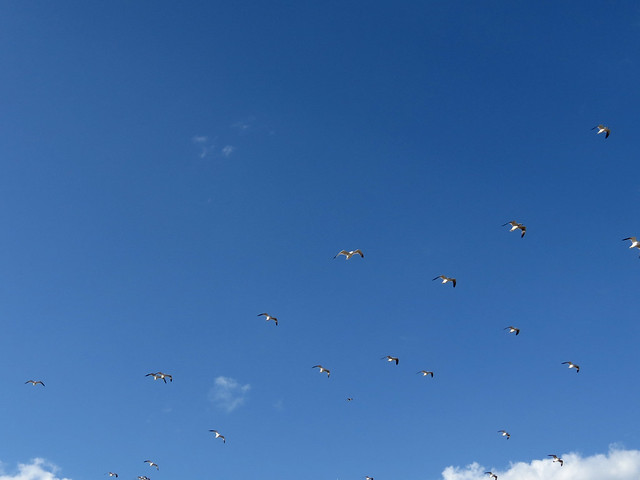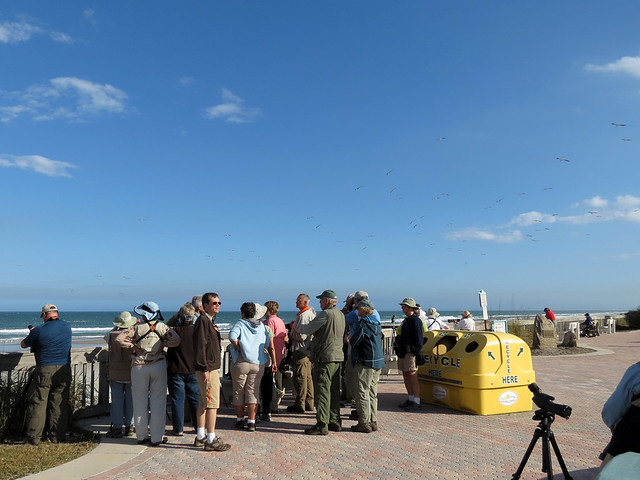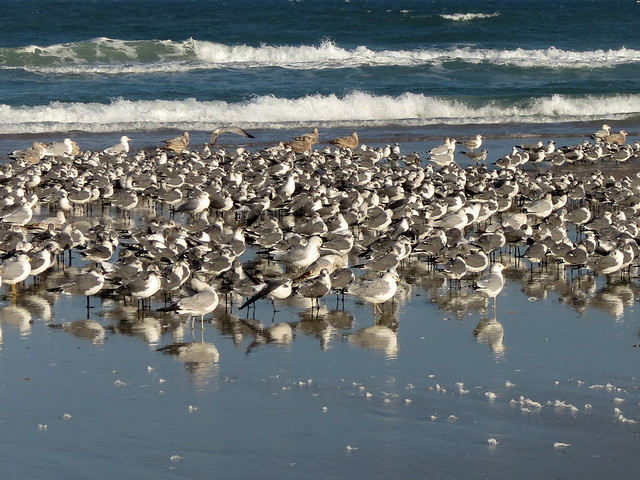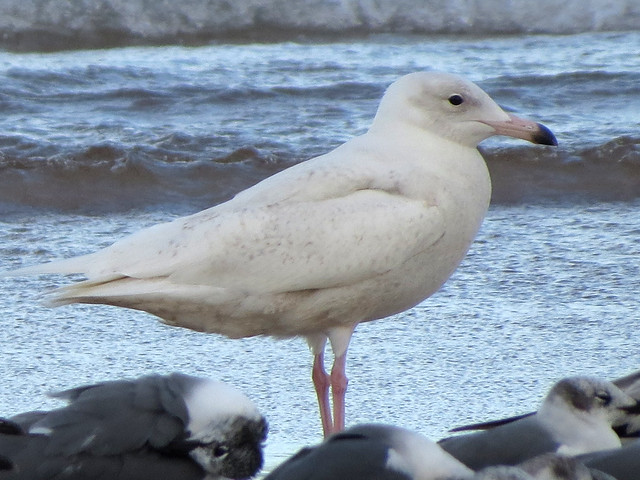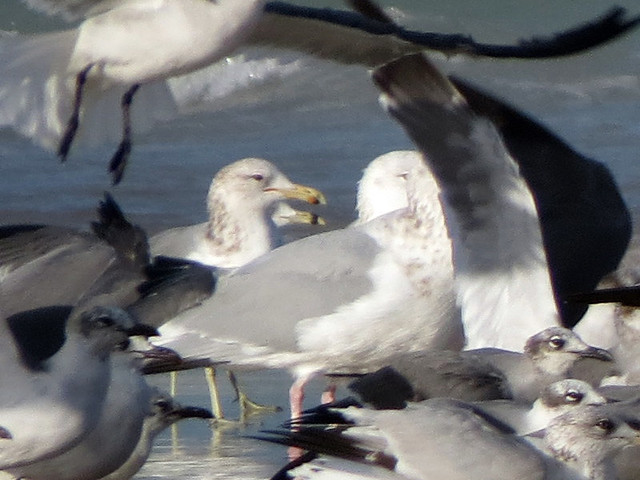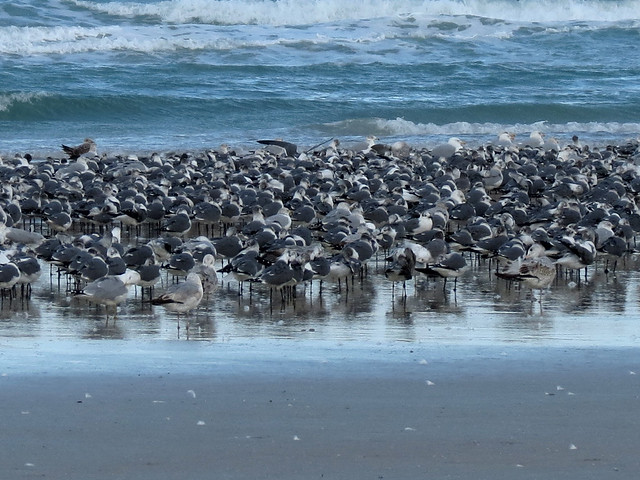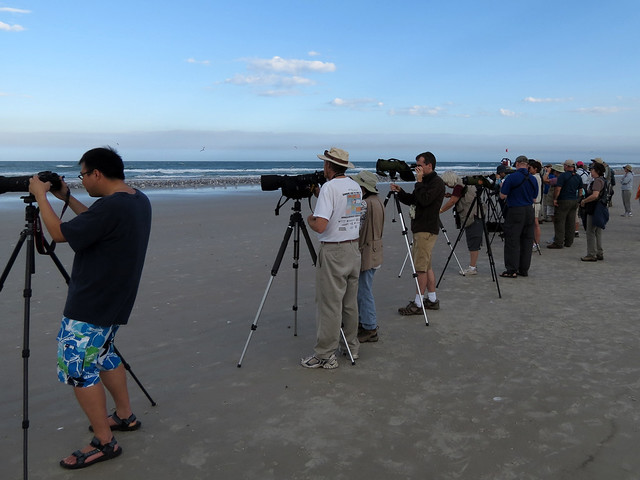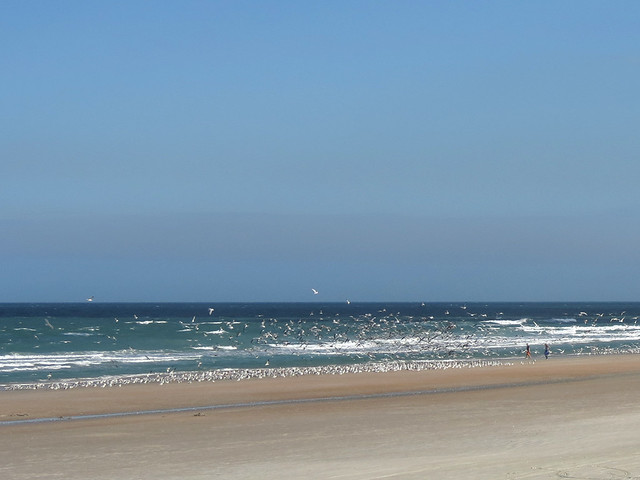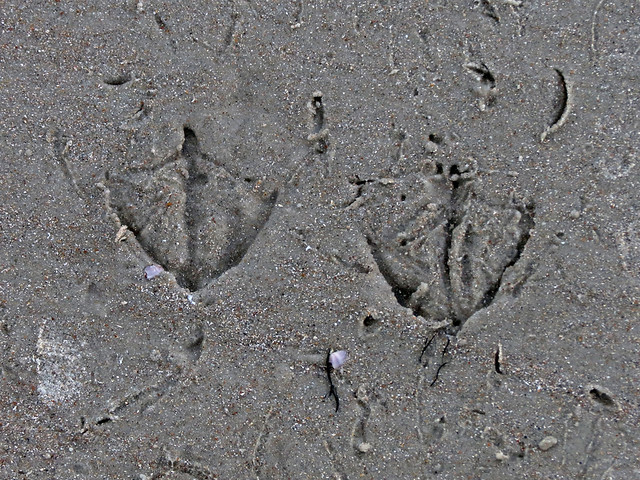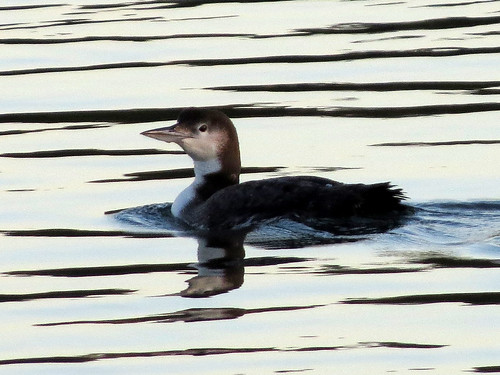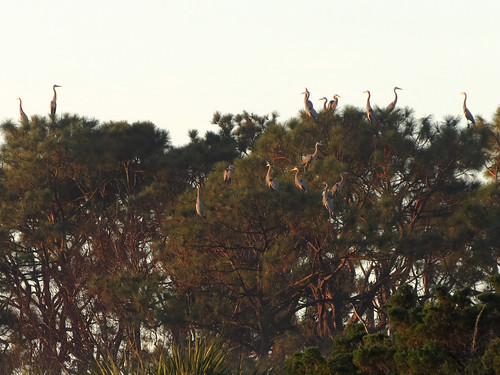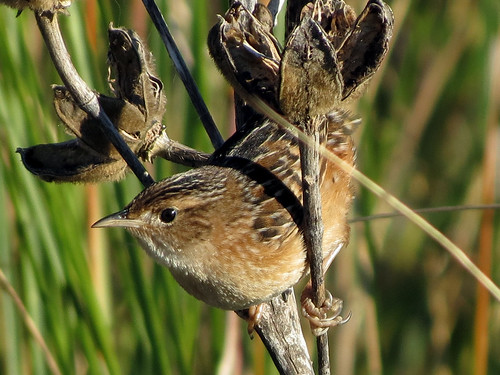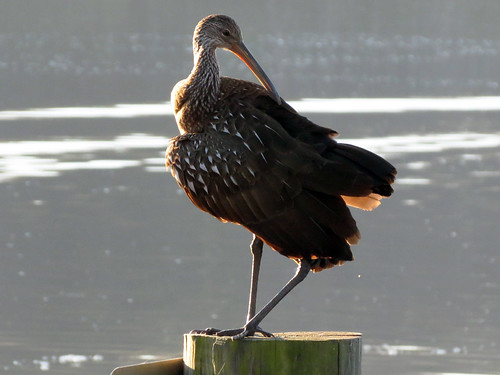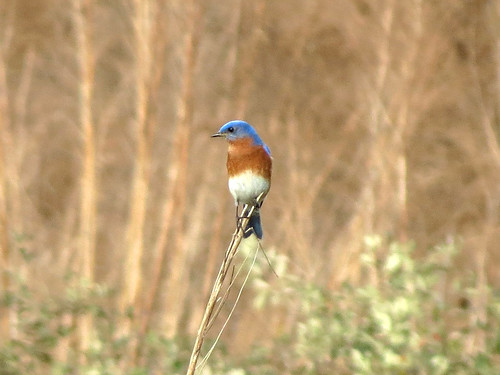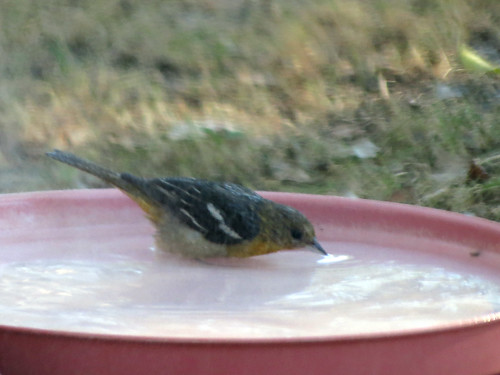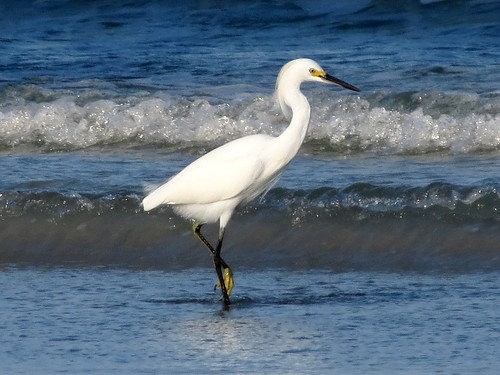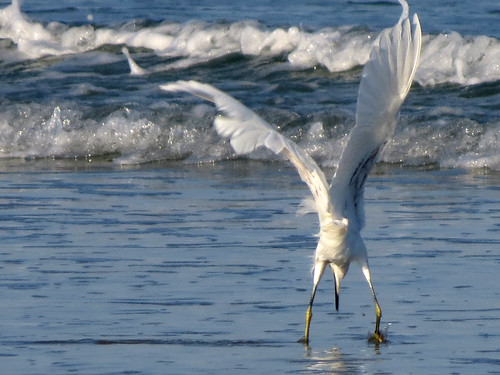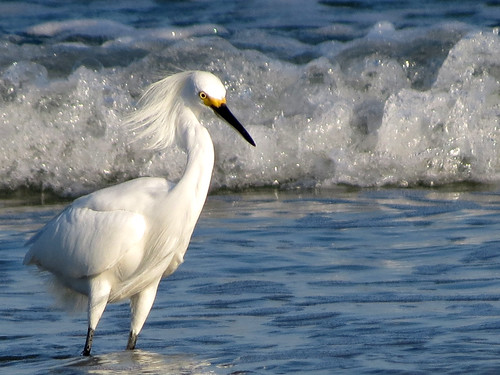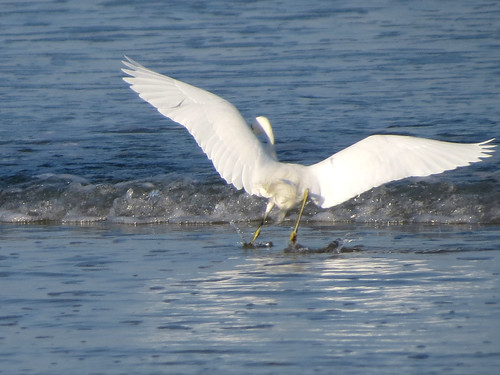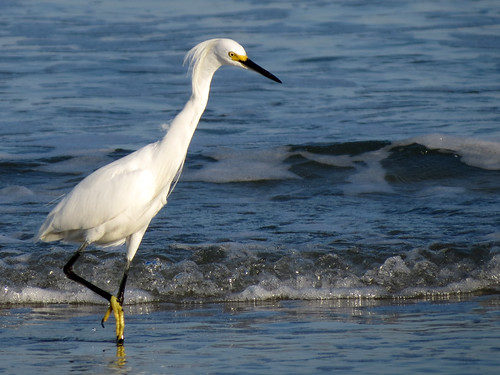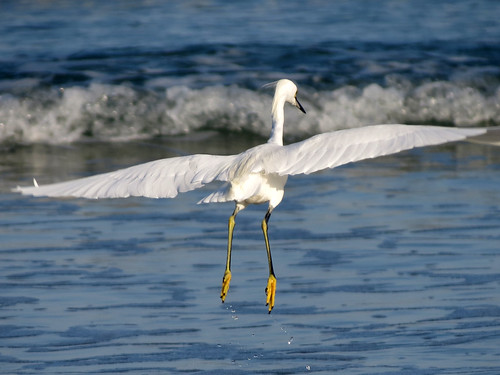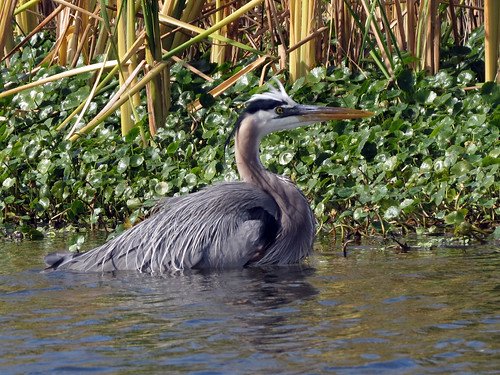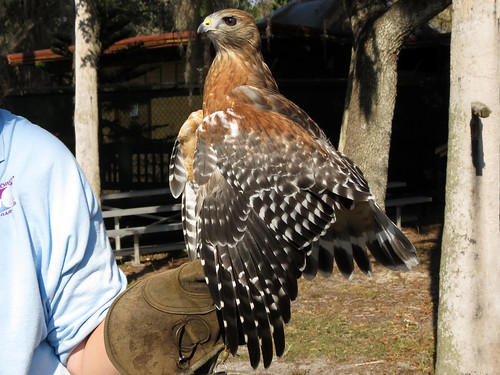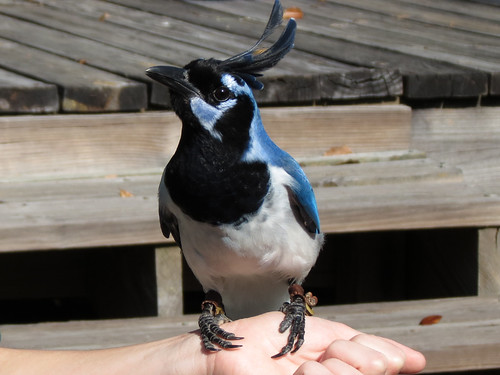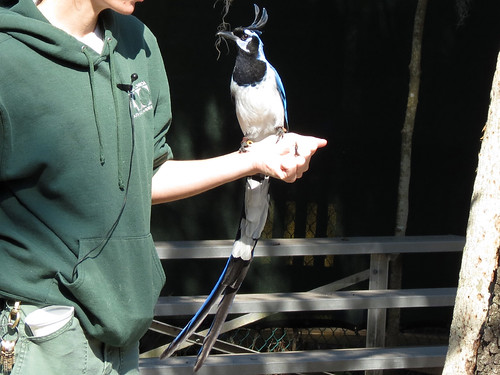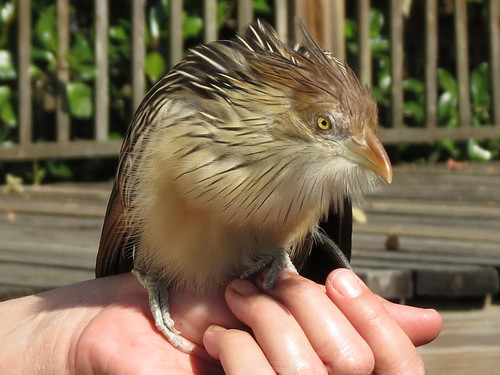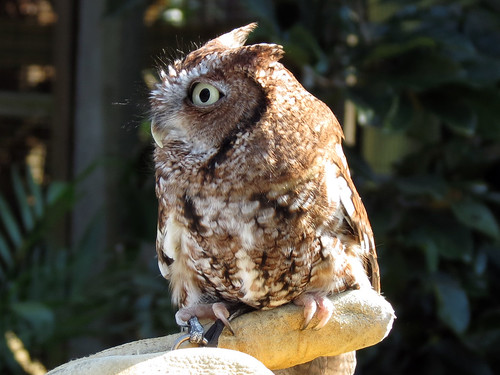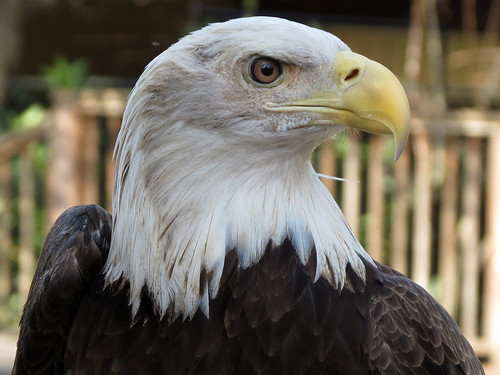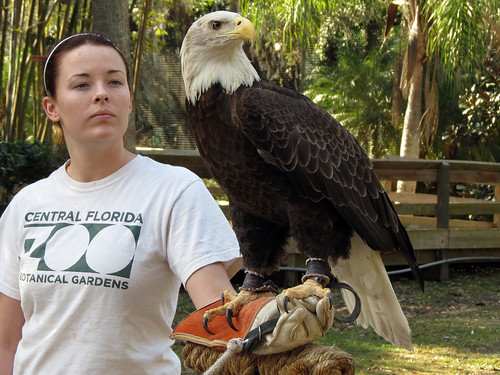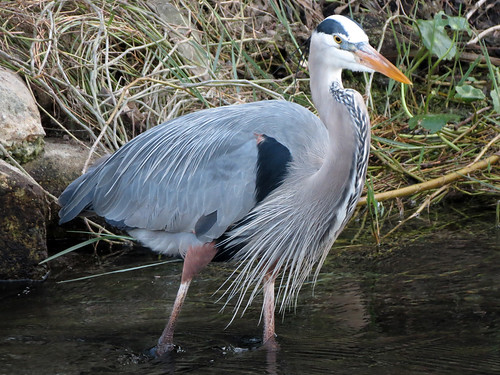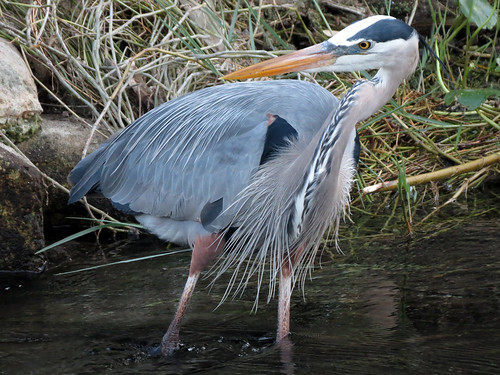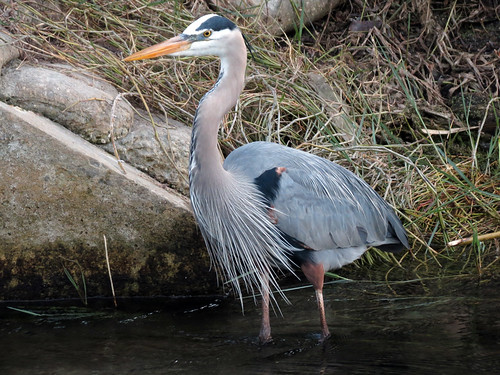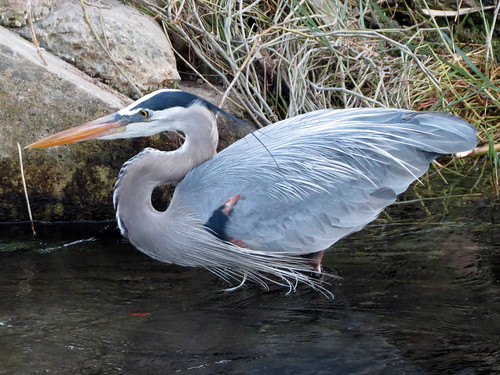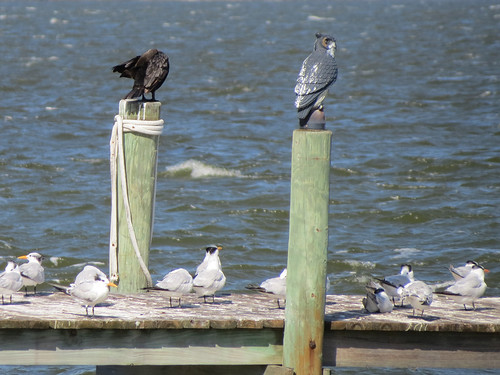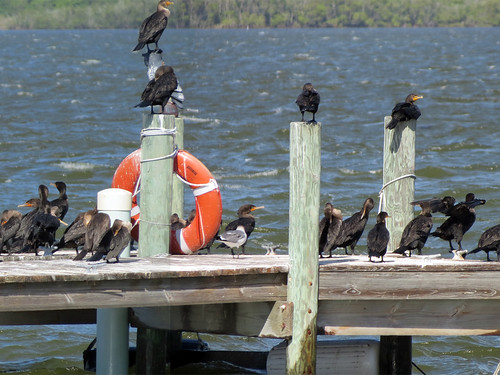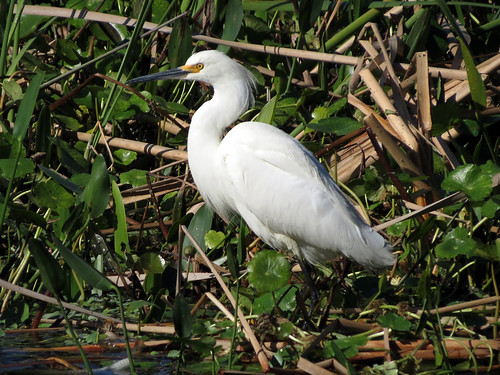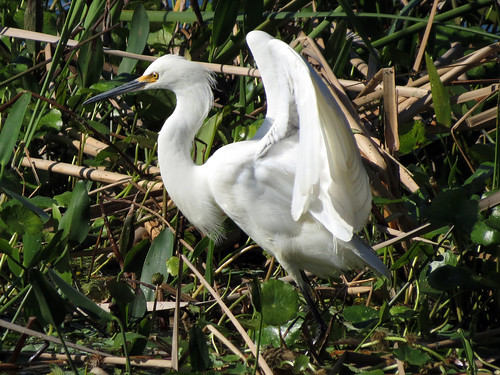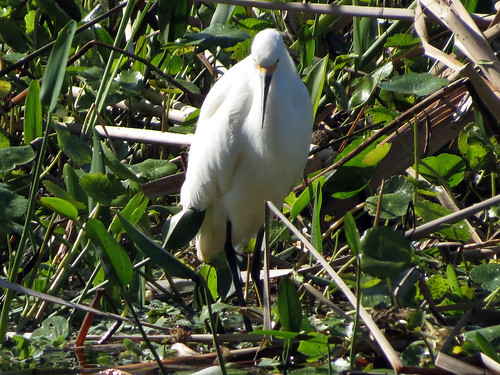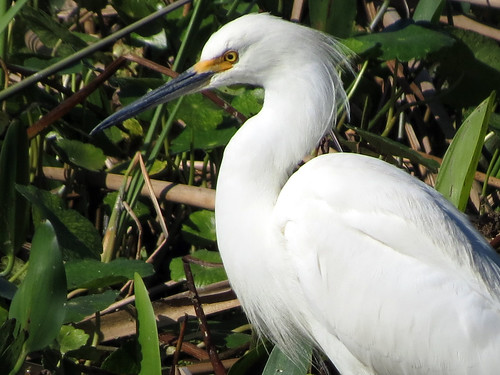“422 photos”
I became ill shortly after the Gull Fly-in on Thursday night (NOT from the gull-watching, though!) and I continued to feel green all day Friday. I was so incredibly sad to have to miss an entire day of the Space Coast Birding and Wildlife Festival – what a lousy time to get sick! I missed a field trip and a few classroom presentations and I was so bummed.
I felt like myself again on Saturday and had a great day at the festival. And as a consolation to missing Friday, Arthur and I signed up for an extra day, Sunday. Our first presentation wasn’t until 10am Sunday morning, so we decided to make a rather mad dash to Merritt Island NWR and take a spin around Black Point Wildlife Drive.
It was incredibly birdy, and it was also quite naturally crowded with birders. We had a hard time getting off the main road because of a gaper’s block right at the entrance. A mixed flock of White Ibis, Roseate Spoonbill, and others were delighting several cars-full of birders.

We squeaked along, delighting in the delight of all the out-of-state birders gawking at Florida specialties. All along the road we came across clumps of birders standing on the road, looking at and photographing great birds. We pressed on, slow but steady. Once we crept by a pair of photographers pointing their cameras into a ditch close to the road. Arthur looked down as we slowly passed and whispered to me, “Bittern!” I pulled over and we carefully, quietly walked towards the photographers to get a look at the American Bittern. My first view was like this.
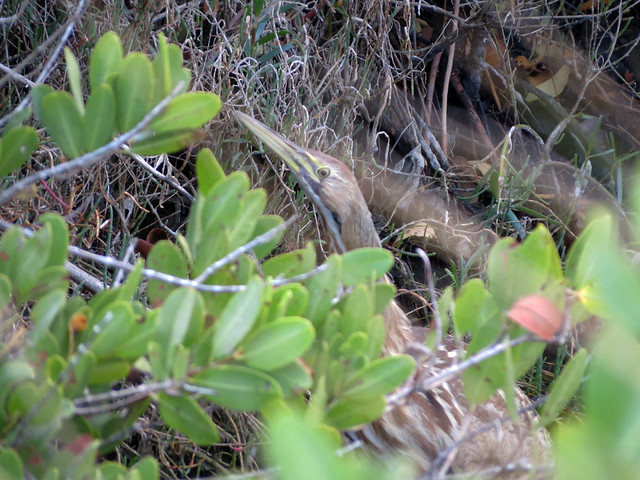
Normally I would be ecstatic to take such a photo of an American Bittern with my point-and-shoot Canon. But as we watched, the bittern stepped out from behind the reeds to hunt. Check out the motion in the animated GIF below; the bird moved its entire body but the head stayed perfectly still!
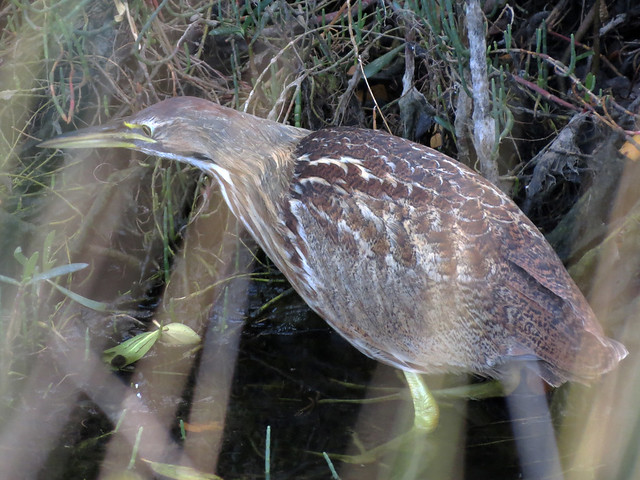

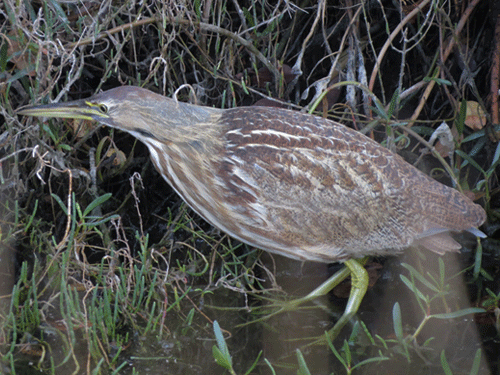
We watched it for perhaps five minutes before it caught a tiny snake, ate it, and then headed back into the reeds and out of view.
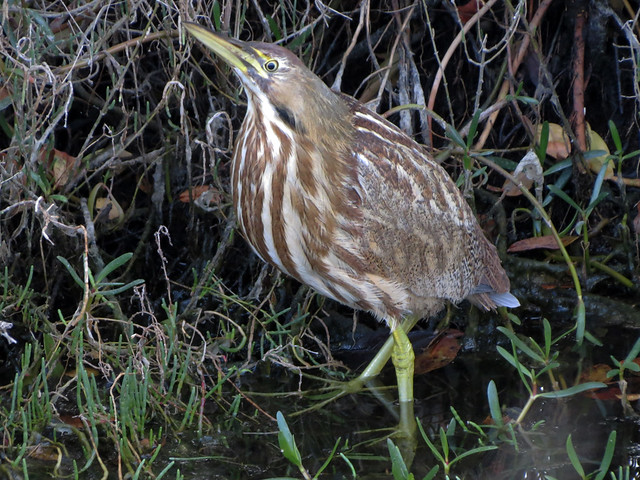
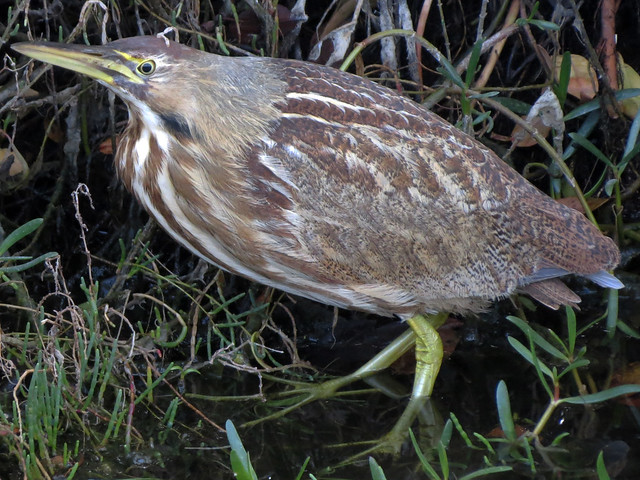
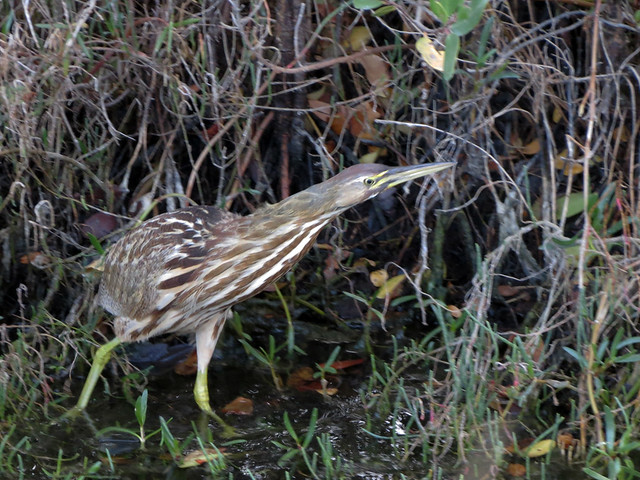
After it disappeared, one of the photographers remarked to no one in particular: “422 photos!” That’s a lot of photos of a very cooperative and beautiful American Bittern. I’m sure at least 421 of them were better than mine, but I’m thrilled with what I got anyway. I hope you like them, too.



